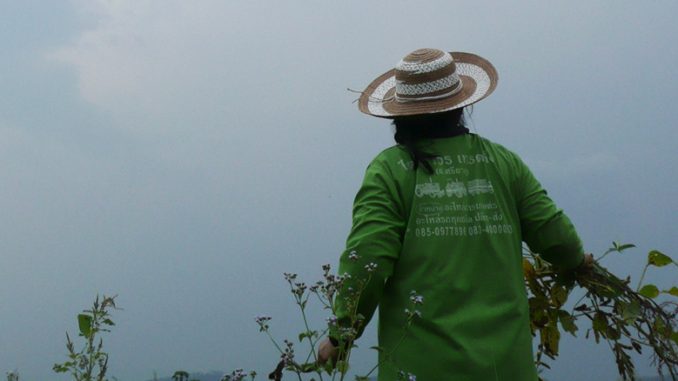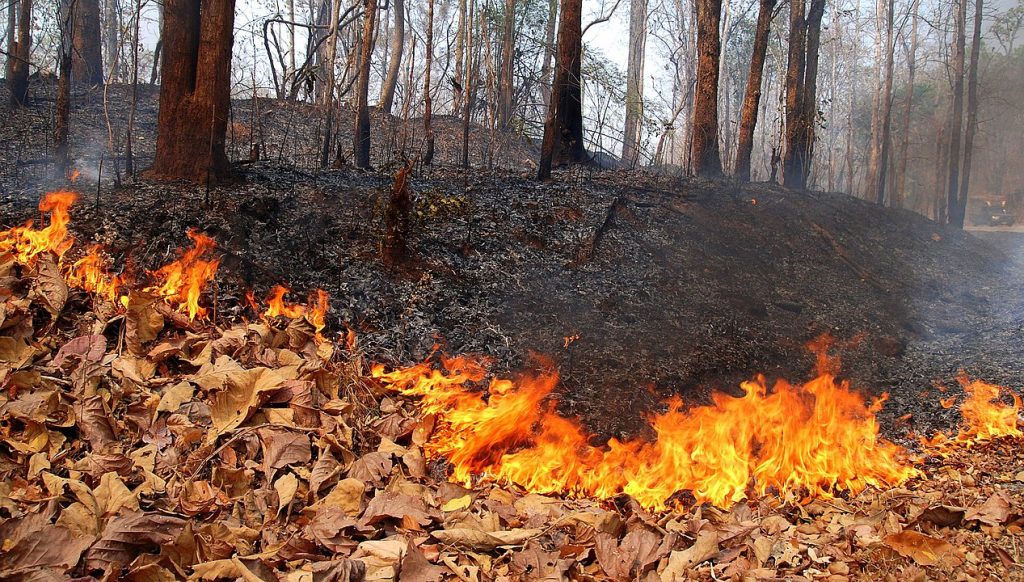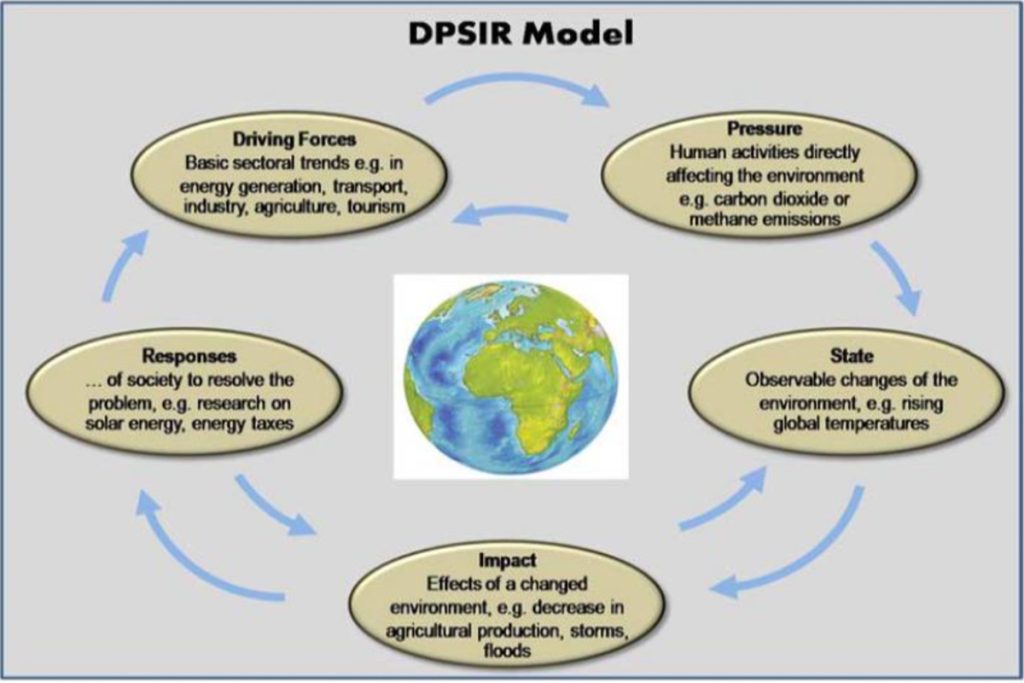
Climate change is one of the most critical global socio-environmental risks of the 21st century. Peer-reviewed publications have confirmed increased in frequency and magnitude of extreme weather events, habitat loss, crop failure and inundated coasts and islands. Under the guidance from United Nations Framework Convention on Climate Change (UNFCCC) to stabilize greenhouse gas emission and to build resilience against future impacts, Thailand has responded well by establishing the Thailand Climate Change Master Plan 2015–2050 (TCCMP). This is all fine at international policy level, but what exactly does a 2°C increase in temperature and 15% more chance of extreme flood and drought really mean for Thai people?
Climate change, known in Thai language as karn plien plang sapab puumi aagad can be understood in different ways. Instead of counting carbon concentration like a scientist, for a farmer, climate change might be known through crop failure due to unfavorable seasonal conditions. It might require religious ceremonies to appease deities or buying more fertilizer. For a Buddhist monk, the solution to bad weather is through correction of the mind; to restore the moral significance back to nature. The problem of changing weather, they believe, can be solved locally, individually and independently of any international organization, unrelated to low carbon policy making (Vaddhanaphuti 2020). The question is, do these religious-inspired actions count as eligible for reducing the problem?
In this article focusing on the landscape of climate knowledge and policy making in Thailand, I explore the historical development of climate knowledge and the different ways that climate change can be known and responded to. While there are multiple realities of climate change articulated by various groups, it seems that these Thai climate knowledge has been reduced only to greenhouse gas reduction under technocratic national and international climate governance regimes. Other forms of climate knowledge have been marginalized. I conclude my analysis by exploring ethical and political implications of this configuration in order to bring about climate knowledge pluralism and fairness in climate policy. Due to limited space, this article focuses mainly on the context of climate adaptation.

Making of Climate Knowledge and Policy in Thailand
The issue of climate change in Thailand emerged from an academic circle in late 1990s, concerning physical and economic impacts on forest biodiversity and crop productivity. They were engaged in research described as ‘predict-then-adapt’ studies where the focus was on fine-tuning the climate projection required for accurate prediction, rather than investigating the inherent social and political causes of vulnerabilities (Chinvanno and Kersuk 2012). Studies on the social dimension of climate change gradually increased especially in urban, agricultural and coastal sectors (available here). In 2011, Thailand Research Fund published a report called Thailand’s First Assessment Report on Climate Change (TARC) to review the state of climate knowledge in Thailand. TARC’s report adopted the styling and structure of the Intergovernmental Panel on Climate Change (IPCC), UNFCCC’s intergovernmental body for global climate knowledge synthesis. It was heavily influenced by the Thai scientists who co-authored in the IPCC reports. The Second Assessment Report, released in 2016, concluded that there were still limited studies on cross-scale and multidirectional responses to climatic, ecological, social and economic pressures (see exceptions in Forsyth and Evans 2013; Marks 2019).
Climate change entered the Thai public and media around 2007, aided by the release of the IPCC report, which was translated into several Thai handbooks and televised interviews, and also Al Gore’s movie “An Inconvenient Truth”. Moreover, transnational, country-wide, cross-scale climate projects began to materialize, for example: START; Hug Muang Nan; TEI; ACCRN; GIZ; USAID; CARE. Their common goals, similar to that of the national climate policy described below, were to reduce carbon emission and increase resilience to climate impacts in various geographical settings such as urban, rural and coastal areas, and in agriculture, water, energy and policy sectors.
Thailand has responded to UNFCCC’s call through partnerships between the Office of Natural Resources and Environmental Policy and Planning (ONEP) and the German development agency Deutsche Gesellschaft für Internationale Zusammenarbeit (GIZ). As a result, the Thailand Climate Change Master Plan 2015–2050 (TCCMP) was officially launched aiming to create a low carbon society by reducing greenhouse gas emission by 20-25% against a “business-as-usual” baseline scenario by 2030, and developing climate risk action plan, while maintaining competitiveness in economic growth and agriculture production and sustainable development. Climate policies and TCCMP, however, were criticized to be overly ambitious, unclear, neglecting cross-scale social, environmental and political contexts, and overlooking marginalized groups (Eucker 2014; Lebel et al. 2009;. Wongsa 2015).
The Thailand Climate Change Master Plan, together with the climate organizations described above, aimed at improving climate literacy among the Thai public through teaching the difference between the terms ‘weather’ (aagad), ‘climate’ (pumi aagad) and ‘climate change’ (karn plien plang sapab puumi aagad). Regardless of people’s dialects, the latter two are technical terms, hardly spoken in vernacular Thai; they were invented to match that of the scientific terms, hence putting local weather in context of long-term change in the global climate system (Vaddhanaphuti 2020). Compared to an ethnographic account in Northern Thailand described in the beginning of the article, what the climate practitioners have done were to remove the experiential, cultural and spiritual characteristics of the weather, and turn it into an abstract, quantifiable object.

An example shows the ways in which non-scientific climate knowledge has been treated: In a public forum in Nan province back in 2014 (Vaddhanaphuti 2017), a representative from a Karen community claimed that his traditional knowledge could help scientists observe signs of climate change, while also arguing that his simple livelihood should not be blamed by the authorities for forest burning and air pollution. His speech received applause from the audience. But in separate interviews with representatives from two technically-oriented climate organizations, one welcomed knowledge integration while the other considered local knowledge as unnecessary in their project. It was easier for them to assume pedagogic, technocratic role in dictating how weather and climate is defined, understood and responded, while delegitimizing illogical beliefs and local practices.
Ultimately, there have always been multiple realities of climate change in Thailand articulated differently by scientists, media representatives, local villagers, climate practitioners, Buddhist monks, and so on. Climate change is thus understood in multiple different ways it is: a reality that is observable and manageable; a travelling idea from the West, explained by experts; a big problem that needs urgent solution; a new development opportunity; am example of damage to nature resulting from moral erosion; and a local problem that requires spiritual solution (Vaddhanaphuti 2020). It should be noted, however, that these narratives are constructed with unequal power. Whether a climate narrative or practice is well received or silenced depends on the power of the practitioner, speaker and the audience. In the current landscape of climate knowledge in Thailand, it seems the scientific knowledge and managerial interventions are the winners.
How did this happen? Surely, the superiority of scientific knowledge cannot be taken for granted, but is instead a result of sets of situated practices at different sites (Mahony and Hulme 2018). Climate knowledge emerges through statistical aggregation of the ever-changing weather around world, thereby stripping off moral, cultural, historical and geographical ties. A long-term deviation from the ‘normal’ allows the UNFCCC to frame it as a universalized global problem. This rather reductionist, managerial approach makes little room for local sorts of knowledge and action apart from reducing greenhouse gas emission and building resilience against impacts (Hulme 2015). The same goes for the work of the Thai-German climate policy cooperation and some climate organizations that enrolled Thailand into the global climate regime while acting as key players in bringing about greenhouse gas reduction and climate development (Ober and Sakdapolrak 2020). This was achieved at two levels: through rounds of workshops where technical terms and diagrams were repeatedly taught; and through paperwork where statistical data of carbon emission were regularly submitted to be evaluated by GIZ and the UNFCCC. The spatialization and production of global climate knowledge has occured under these emerging hegemonic technocratic regimes at international and national levels. In turn, these regimes of knowledge have reshaped what it means to know and respond to the changing weather at local settings.

Governing messy climate: Ethical and political considerations
Klenk et al. (2017) suggest that reflexivity to ethics and politics should be central to knowledge production in climate policy making. This means that rather than pre-defining what climate change is and how it is to be responded to from a narrow scientific perspective, perhaps it is more fruitful for climate knowledge in Thailand to locally grounded, decolonized from Western logics, and used to its full capacity. This would require restructuring of institutional arrangements to accommodate what might be thought of as a more-than-climate policy.
If people and their weather are inextricably entwined, then, damaging the atmosphere is a loss of a key cultural resource. At the same time, neglecting ethnic diversity also ignores knowledge used for living with and managing nature, including the weather. To rectify this gap, knowledge pluralism is crucial. For example, indigenous weather observations could add richness in places where instrumental stations were lacking (Lebel 2013). More optimistically, lay Thai climate knowledge could interrogate the black-boxed scientific knowledge, hence creating a co-produced knowledge that addresses local particularities (Lane et al. 2011). Repositioning lay and expert in the process of environmental management ensures voices of the insiders and of the marginalized are heard and that certain forms of climate knowledges are not neglected or misinterpreted. Such approach has already been carried out by the UN’s Intergovernmental Platform on Biodiversity and Ecosystem Services (IPBES), a younger cousin of the IPCC, which included a wider range of stakeholders. These included non-scientist experts and indigenous representatives who were invited to synthesize biodiversity knowledge (Beck et al. 2014). Perhaps a rebirth of Thai Baan research focusing on weather, climate, and livelihoods may seem plausible. This kind of villager research, which has been critical to local struggles over natural resources, might help open up space for city dwellers, farmers, or ecology monks to tell their ways of knowing and dealing with unpredictable socioenvironmental changes. For that to happen, it would require a much more reflexive institutional arrangement to take place. It will also require those forms of knowledge and the actors that produce them to be seen as legitimate intellectual interlocutors.

Emerging forms of atmospheric governance offer site where Thailand’s technocratic state and science-driven government attempt to control and commoditize natural resources from the bureaucratic center for greater economic prosperity (Forsyth and Walker 2008). The extension of Thai government’s power from lowland, to upland and to the sky turned both lay villagers and their everyday weather into governable objects and pushed them toward the periphery of climate knowledge production, where they have little say in its making. The atmosphere thus becomes a political space of contestation, dominance and marginalization.
In this case, re-examination and revision of the disintegrated and ad hoc TCCMP (Wongsa 2015) is essential. Considered as another large-scale development project, the focus of TCCMP needs to extend beyond mere climatic issues. Rather than reducing all activities in all sectors to a single national emission target, governing climate change from a bottom-up perspective means tackling the power-laden non-climatic issues such as uneven development and capitalist exploitation, inequality and marginalization, political instability, property rights, gender and ethnicity, and so on (Forsyth and Evans 2013). This approach would empower local groups to tackle socioenvironmental problems from their perspectives that may directly or indirectly contribute to climate mitigation and adaptation measures. Understanding the ethical, cultural, spiritual and emotional dimensions of socioenvironmental vulnerability is still lacking in Thai climate adaptation research and policy. To tackle the complex problems posed by climate change the government, should be put at a higher priority than instantaneously deploying scientific and technological fix to the atmosphere. Failing to do so might risk reproducing existing social, institutional and political barriers to development and deepen cross-scale vulnerabilities (Lebel et al. 2011; Scoville et al. 2020).
Chaya Vaddhanaphuti
Lecturer in Geography at Department of Geography, Faculty of Social Sciences, Chiang Mai University, Thailand
